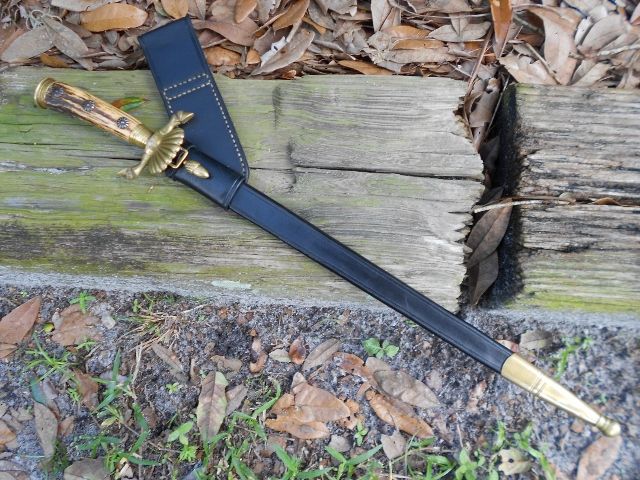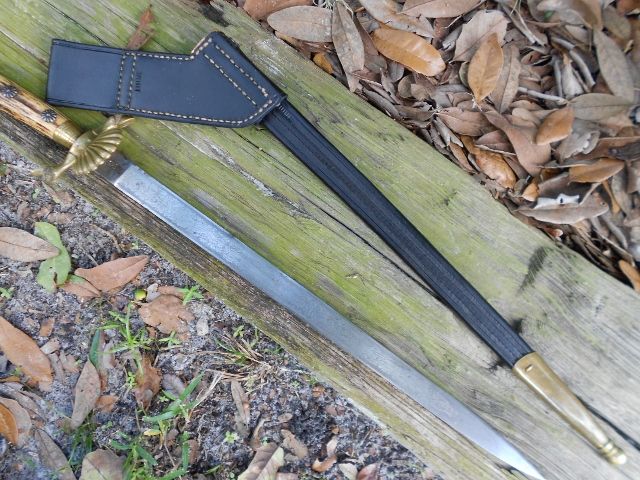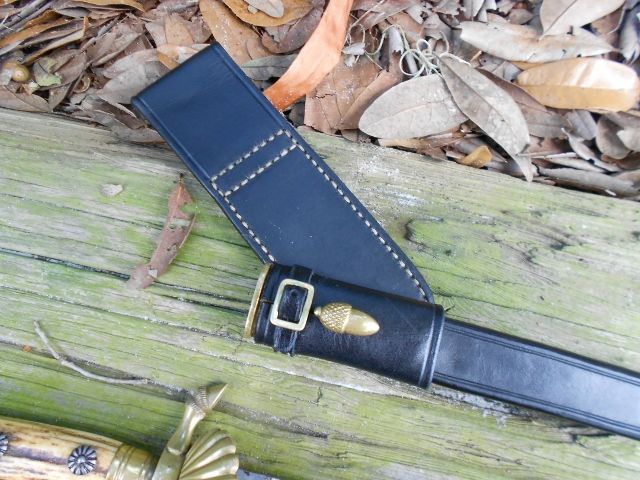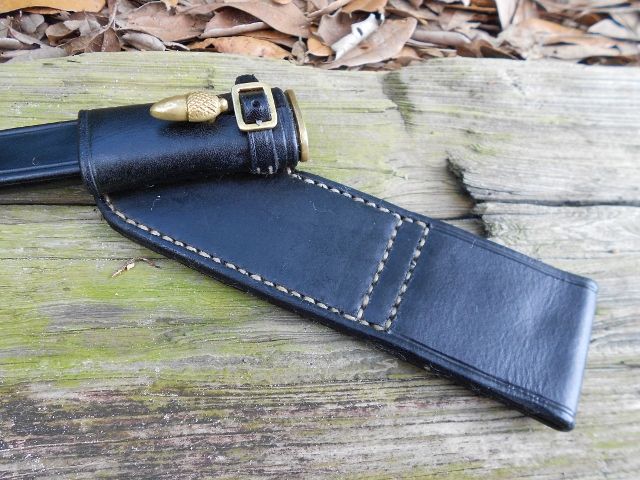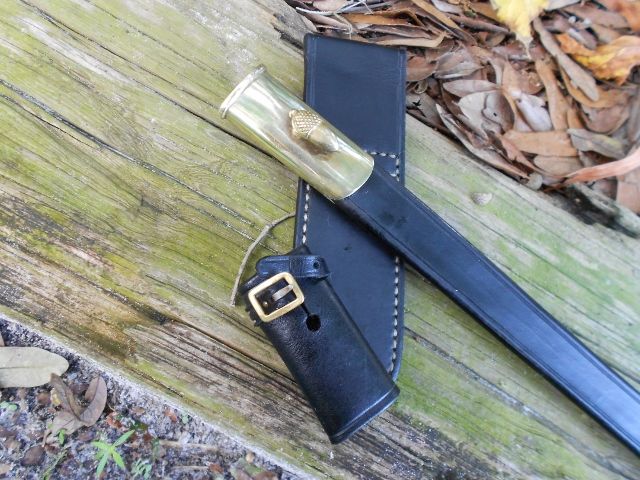Nice work, Wick.
David,
On NCO and Officer Militia Swords in the 1830's through 1850's, and more recently in similar swords, they also used a brass staple like Wick mentioned, but the loop was inside the leather and only the two wire posts came up through the leather and drag/tip. They had some kind of iron/steel anvil that went into the leather inside the drag/tip and they beat the wire posts down from the outside and then filed them off flush with the surface metal of the drag/tip. After the drag/tip is polished, it is VERY hard to see where the pins are. The link below shows the general kind of sword I refer to.
http://www.sailorinsaddle.com/product.aspx?id=998
The way I know this is at a gun show in Anaheim, CA in the early 90's, a guy had three good sized cardboard boxes filled with mixed military metal pieces and parts. Though he did not say where the stuff came from, they looked like stuff that had come from the companies who supplied Arms and Militaria to the Motion Picture Studios. He wanted $50.00 a box, but each box had clear plastic over the top and he would not allow anyone to tear open the plastic to see what was inside. He did allow others to shake the box a little to see what was inside. Now $50.00 was not a huge amount of money then, but it was still a good bit when one did not really know what was in the boxes. No one bought any of the three boxes when I came back on Sunday, so I shook them again and decided to take a gamble on one box. When I got back to my tables and opened it, it had a LOT of throats and drags/tips for this type of sword and similar regulation swords in the box. So I went back and bought one more box and it had more. Many of the drags/tips had broken off the leather scabbard and the leather was still solidly attached to the drags/tips. So it was a pretty solid and permanent way to attach a drag/tip.
When I decided to replace the old and really badly repaired leather portion of the scabbard on our family's M1850 Infantry Officer's Sword, I found the same kind of brass staple on the inside of the drag on that scabbard as well. So perhaps this was a common feature during this time period. I did not want to change the outside of that drag/tip, so I cut the loop of the staple off inside the drag/tip and then glued the drag/tip on with a really high strength black epoxy. Unless the leather rots away in future generations, that drag/tip won't be coming off.
When I assembled my M1850 Foot Officer's sword from Original dug or separate brass parts and NOS unmounted blade, I also used the high strength black epoxy to attach the original drag. (The repro M1850 swords were not yet being made in the early 80's, so that's why I put together one from pieces.) That sword drag took a lot of punishment at "Tacticals" (what we called war games) and never loosened a bit in a decade of use.
Like Wick, I have also seen just two small wires used on earlier scabbards and sometimes they had tiny washers (often copper) inside the leather of the drags/tips. On drags/tips that had iron throats and drag/tips, they used two small iron wires the same way, though I have seen brass or copper pins used in a couple of cases.
Gus
